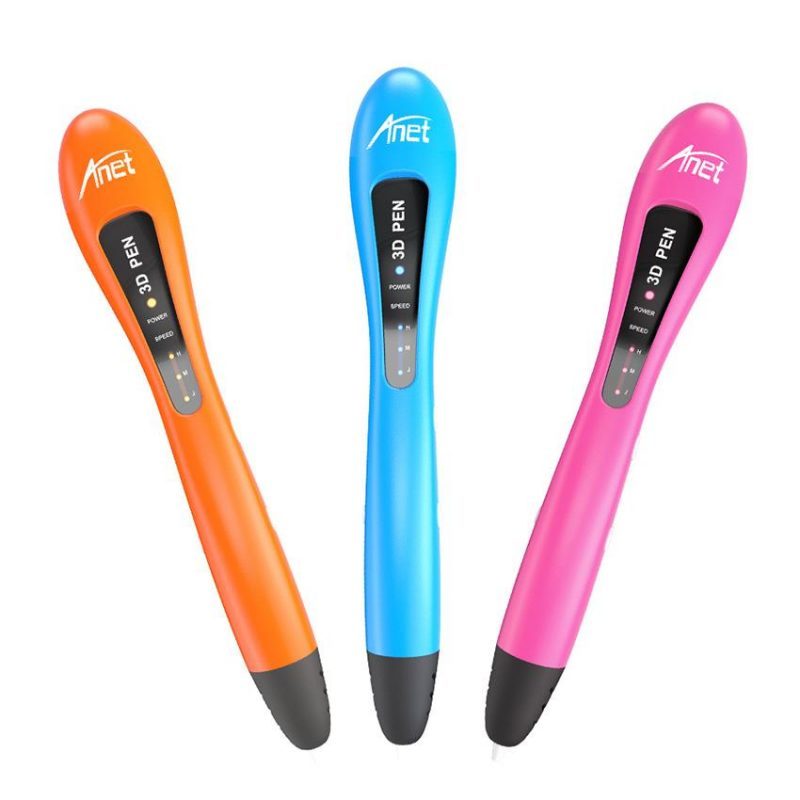Educational 3D printer
Shop NowFind a product
Find a product
filter
-
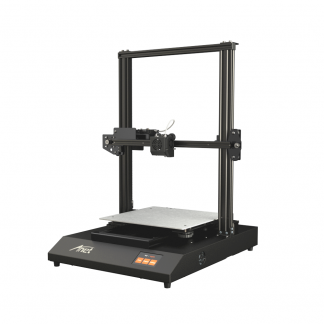
Anet ET5 Pro 3D Printer
76 Review-
Windows

-
MacOS

- Education
- Build Volume: 300*300*400
- Software: Cura, Repetier, Simplify3D
- Layer Thickness: 0.1 - 0.3 mm
- Frame: Metal, aluminium
- Nozzle diameter: 0.4 mm
- Filament support: ABS/PLA/TPU/Wood/Nylon
- LCD display: Color touch screen
£470.00
£550.00
View Details
-
-

Anet ET4 3D Printer
120 Review-
Windows

-
MacOS

- Education
- Home
- Build Volume: 220*220*250
- Software: Cura, Repetier, Simplify3D
- Layer Thickness: 0.1 - 0.3 mm
- Frame: Metal frame
- Nozzle diameter: 0.4 mm
- Recommended filament: PLA
- LCD display: Color touch screen
£345.00
£460.00
View Details
-
-

Anet A8 3D Printer
62 Review-
Windows

-
MacOS

- Education
- Home
- Build Volume: 220 x 220 x 240
- Software: Repetier - host
- Layer Resolution: 0.1 mm
- Frame Material: Acrylic + Lead Screw
- Nozzle diameter: 0.4 mm
- Filament Materials: PLA, ABS, HIPS, WOOD, PVA, Nylon
- LCD monitor screen: Yes
£260.00
View Details
-
-
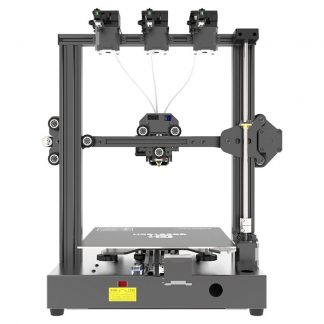
Geeetech A20T 3D Printer
138 Review-
Windows

-
MacOS

-
Linux

- Education
- Home
- Professional
- Build Volume: 250*250*250
- Software: Repetier-Host, EasyPrint 3D, Cura
- Printing technology: FDM
- Filament: PLA, ABS
- Nozzle diameter: 0.4 mm
- Printing accuracy: 0.1 - 0.2 mm
- Screen: LCD display
£450.00
View Details
-
-
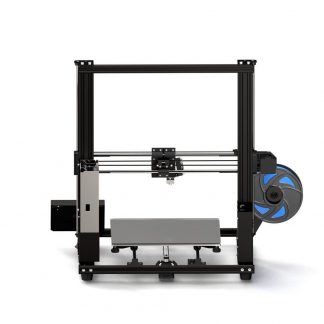
Anet A8 Plus 3D Printer
44 Review-
Windows

-
MacOS

- Education
- Home
- Build Volume: 300*300*350
- Software: Cura
- Layer Thickness: 0.1 - 0.3 mm
- Frame: Aluminium frame
- Nozzle diameter: 0.4 mm
- Recommended filament: PLA
- LCD display: Yes
£325.00
View Details
-
-

Anet ET4 Pro 3D Printer
46 Review-
Windows

-
MacOS

- Education
- Home
- Build Volume: 220*220*250
- Software: Cura, Repetier, Simplify3D
- Layer Thickness: 0.1 - 0.3 mm
- Frame: Metal, aluminium
- Nozzle diameter: 0.4 mm
- Recommended filament: ABS,HIPS,PLA,Wood
- LCD display: Color touch screen
£380.00
View Details
-
-
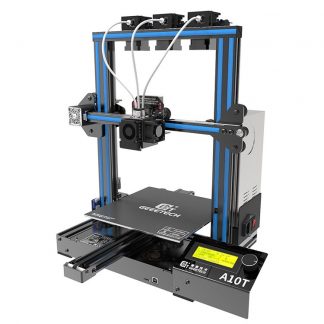
Geeetech A10T 3D Printer
51 Review-
Windows

-
MacOS

-
Linux

- Education
- Home
- Build Volume: 220*220*250
- Software: EasyPrint 3D, Repetier-Host, Simplify 3D, Cura, Slic3r, etc.
- Printing technology: FDM
- Filament: PLA, ABS
- Nozzle diameter: 0.4mm
- Printing accuracy: 0.1 - 0.2 mm
- Screen: LCD display
£360.00
View Details
-
-
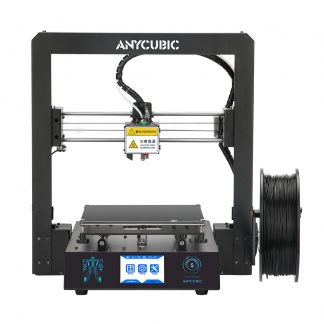
Anycubic Mega S 3D Printer
52 Review-
Windows

-
MacOS

- Education
- Build Volume: 210*210*205
- Software: Cura
- Frame: Metal frame
- Layer Thickness: up to 0.05 mm
- Nozzle diameter: 0.4 mm
- Recommended filament: PLA
- LCD display: Yes
£250.00
View Details
-
-
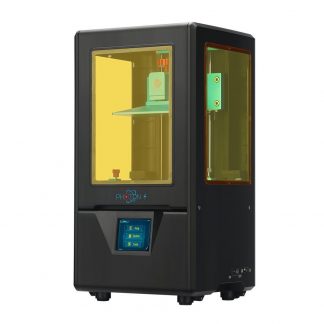
Anycubic Photon S 3D Printer
52 Review-
Windows

-
MacOS

- Education
- Home
- Build Volume: 115*65*165
- Printing material: 405nm photosensitive resin
- Y axis resolution: 1.25um
- Layer resolution: 25 ~ 100um
- Printing speed: 20mm/h
- Air filtration system: Activated carbon
- Rated power: 50W
£390.00
View Details
-
-

DISWAY DC04 3D Printer
52 Review-
MacOS

- Education
- Build Volume: 320*320*320
- Software: Dcreate3D, Cura, Repetine-Hdst, Simplify 3D
- Frame: Metal
- Precision: 0.1mm
- Filament: PLA, ABS, TPU, etc
- Material cut of detection device
- Screen: LCD color touch
£610.00
View Details
-
-
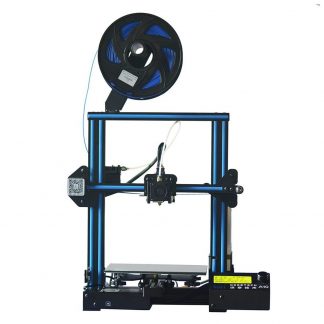
Geeetech A10 3D Printer
43 Review-
Windows

-
MacOS

-
Linux

- Education
- Build Volume: 220*220*260
- Software: Repetier-Host, EasyPrint 3D, Cura
- Filament: PLA
- Printing technology: FDM
- Nozzle diameter: 0.4 mm
- Printing accuracy: 0.1 - 0.2 mm
- Screen: LCD display
£225.00
View Details
-
-

Geeetech A20M 3D Printer
78 Review-
Windows

-
MacOS

-
Linux

- Education
- Home
- Build Volume: 255*255*255
- Software: Slic3r, Cura, Simplify3D, Repetier
- Frame: Aluminium
- Printing speed: 60 mm/h
- Nozzle diameter: 0.4 mm
- Printing accuracy: 0.1 - 0.2 mm
- Printing: mixed color
£380.00
View Details
-
Showing 1–12 of 18 results
3D Printers in Education
Development of science and new technologies is leaping forward with great speed nowadays. And where does this development take place? Yes, mostly in greatly funded university science programs and labs. 3D printers play a great deal in advancing those technologies, and as a product have been advanced as well, and now can print such things as drone, plane or space shuttle parts, race car parts, are greatly used in architecture to present models and mockups, in the dental industry, printing molds. The list goes on and on. As a student, you usually choose a university depending on your needs and what environment and learning equipment they can provide so you can reach your full potential. A lot of universities today invest in great tech labs, to educate and form young minds and bring forward the best ideas and be up to speed on new developments and pioneers in some of them as well. Since 3D printers are now used in manufacturing more and more, thus their presence is also essential in the learning process. You also need to be taught how to operate them, how to build and what materials existing and new they can use. However 3D printers are not just a new technology to develop products, they also require new software, new materials, thus making it an industry of its own and in need of a good and new professionals. It is great that as a student you can use your university’s lab to test your theories and bring to life your ideas, however not all universities offer such equipment. In other cases, some departments don’t even offer them, for example, not every design department has a 3D printer, however, it is very useful for future designers, for example, to learn and know how to print their creations, and see if the functionality is as great as they thought it would be. So it is a good idea for some students to invest in their own 3D printers and, as students, in general, are not the wealthiest bunch of people, they are looking for the best budget 3D printer out there. The first 3D printer out was an SLA 3D printer, that is using ultraviolet light to print thin layers of material and create the given 3D object. SLA printer is affordable and there is a wide range of companies and manufacturers that offer such printers. They can be as complex and difficult in use as professional ones, and easy and simple, that can even fit into a category of a 3D printer for kids. There are also many other 3D printing technologies, such as FDM (Fused Deposition Modeling) that is probably the most commonly used one for consumer printers today, SLS (Selective Laser Sintering), SLM (Selective Laser Melting), DLP (Digital Light Processing) and many more. Some of them use common methods to print, differing in light or power source and in either melting or sintering the raw materials to mold the end product. Before choosing your first 3D printer you need to think about various aspects like your budget, your printing needs, materials used and where you will be doing most of your 3D printing. Some 3D printers emit fumes that can be unpleasant and sometimes dangerous, making printing at home a bit challenging. There are lots of different 3D printers on the market these days that come in many different shapes and sizes. If we look at the affordable 3D printers, most of them come as a DIY kit, meaning you have to assemble them yourself. If you are a beginner at 3D printing, you might consider getting a pre-assembled printer to just start printing right away. On the other hand, putting it together yourself would be a great opportunity to know your printer literally inside out and also get a better understanding of how it works and in case of trouble what to do… Different majors will need to work with different printers and different materials. Most of consumer 3D printers use plastic as their raw material, such as PLA, ABS, HIPS, TPU and so on. However, there are ones that are also compatible with such raw materials as ceramic, metal and wood. Below you can find different affordable and convenient in-use 3D printers to best fit your needs.
3D Printing Technologies
How to choose your first 3D printer
